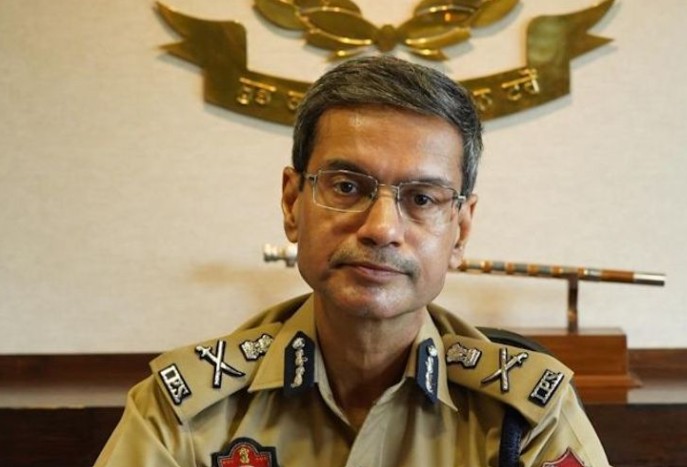The Punjab Police have unveiled an ambitious initiative aimed at reducing emergency response times to just eight minutes, a move that underscores the department’s commitment to enhancing public safety and improving law enforcement efficiency. The new plan involves a multifaceted approach, incorporating technology, infrastructure development, personnel training, and community engagement to ensure swift and effective responses to emergencies. The initiative is expected to significantly improve the overall security landscape in Punjab, instilling a greater sense of confidence among residents while deterring crime.
Currently, emergency response times in Punjab vary significantly depending on the location, the nature of the emergency, and the availability of resources. In many cases, particularly in urban centers, response times have been relatively swift, but in rural areas, delays are often experienced due to inadequate infrastructure, poor connectivity, and logistical challenges. The police department has recognized these gaps and is taking proactive steps to address them through a structured and technology-driven approach.
One of the key components of this initiative is the expansion and modernization of the existing emergency helpline system. The Punjab Police are upgrading their call center infrastructure to ensure that emergency calls are answered promptly and dispatched to the nearest available unit without unnecessary delays. A sophisticated call routing mechanism is being put in place to connect callers with the appropriate response team based on their location and the type of emergency. Additionally, the police department is integrating artificial intelligence (AI) and data analytics to predict high-risk areas and optimize patrol routes accordingly.
Another major aspect of the initiative is the deployment of additional quick response teams (QRTs) across the state. These specialized units will be strategically positioned in high-density areas, major highways, and regions prone to criminal activity. Equipped with state-of-the-art communication devices, GPS tracking systems, and advanced weaponry, these teams will be capable of responding to emergencies with unprecedented speed and efficiency. To ensure their readiness, QRT personnel will undergo rigorous training in crisis management, tactical operations, and first-aid procedures.
Punjab Police are also focusing on strengthening their fleet of emergency response vehicles. The department is in the process of procuring high-speed motorcycles and advanced patrol cars, which will allow officers to navigate through congested areas more efficiently. These vehicles will be equipped with real-time tracking systems, dash cameras, and automated number plate recognition (ANPR) technology, which will enable officers to identify suspicious vehicles and individuals in real-time. Additionally, ambulances with police escorts will be stationed in key areas to provide immediate medical assistance during emergencies.

Recognizing the role of technology in modern policing, the Punjab Police are integrating emergency response systems with smart city infrastructure. A network of CCTV cameras, drone surveillance units, and automated sensors is being established to provide real-time intelligence and situational awareness. Command centers equipped with advanced monitoring tools will allow officers to track incidents as they unfold and deploy response teams with pinpoint accuracy. This seamless integration of technology is expected to enhance the efficiency of emergency responses and reduce the likelihood of errors or delays.
Public cooperation and community participation are also central to the success of this initiative. The police department is launching awareness campaigns to educate citizens about the new emergency response protocols and encourage them to report incidents without hesitation. Helpline numbers, mobile applications, and social media platforms will be actively promoted to ensure that residents can easily reach the police in times of crisis. Additionally, local volunteers and neighborhood watch groups will be mobilized to assist law enforcement in identifying potential threats and ensuring community safety.
Another critical area of focus is improving coordination between different emergency response agencies. Punjab Police are working closely with fire departments, medical services, disaster management authorities, and local municipalities to establish a unified response framework. This inter-agency collaboration will facilitate a more synchronized approach to handling emergencies, ensuring that resources are deployed efficiently and that victims receive timely assistance. A centralized communication hub is being developed to streamline information-sharing between agencies and minimize response times.
Training and capacity-building initiatives are being prioritized to ensure that officers are well-prepared to handle emergencies of all kinds. Regular drills, simulations, and workshops are being conducted to familiarize personnel with various crisis scenarios, including natural disasters, terrorist attacks, medical emergencies, and violent crimes. Psychological counseling and stress management programs are also being introduced to help officers maintain composure and effectiveness under high-pressure situations.
The Punjab Police’s initiative also includes special provisions for handling crimes against women and vulnerable sections of society. Dedicated emergency response teams are being trained to deal with cases of domestic violence, harassment, and abuse with the utmost sensitivity and professionalism. Women’s helpline numbers and mobile safety apps are being reinforced to provide immediate support and protection to those in distress. Additionally, special women’s patrol units are being deployed in areas with high incidences of gender-based crimes.
Funding for this ambitious project is being sourced from multiple avenues, including state and central government allocations, corporate partnerships, and international aid programs focused on law enforcement modernization. The government has expressed its full support for the initiative, recognizing its potential to transform public safety standards in Punjab. Several private sector entities have also come forward to offer technological and logistical support, further strengthening the initiative’s implementation.
Despite the overwhelming optimism surrounding this project, certain challenges remain. One of the major concerns is ensuring consistent implementation across both urban and rural areas. While cities have the necessary infrastructure to support advanced policing measures, many remote villages lack basic connectivity and transport facilities. The Punjab Police are working on innovative solutions such as deploying mobile command units and leveraging community policing models to bridge this gap.
Another potential challenge is public trust in law enforcement. Over the years, incidents of delayed responses, bureaucratic inefficiencies, and allegations of misconduct have eroded confidence in the police force. To address this, the Punjab Police are implementing strict accountability measures, including real-time monitoring of response times and performance evaluations for officers. Citizens will also have the ability to rate emergency response services through digital platforms, ensuring greater transparency and continuous improvement.
Experts believe that if executed effectively, this initiative could set a benchmark for other states in India. With crime rates on the rise and security challenges becoming increasingly complex, a robust emergency response system is crucial for maintaining law and order. Punjab’s proactive approach serves as a model for leveraging technology, community engagement, and inter-agency cooperation to enhance public safety.
As the initiative progresses, Punjab Police remain committed to refining their strategies based on real-time feedback and evolving challenges. Pilot projects and trial runs are already underway in selected districts to assess the effectiveness of the new measures before full-scale implementation. These trials will help identify potential weaknesses and allow for necessary adjustments to be made.
In conclusion, Punjab Police’s plan to cut emergency response times to eight minutes is a transformative step toward modernizing law enforcement and ensuring the safety of residents. Through a combination of advanced technology, rapid response teams, inter-agency collaboration, and community participation, the department is working to create a more secure and resilient Punjab. While challenges persist, the commitment to continuous improvement and accountability will be key to the initiative’s long-term success. If successful, this model could pave the way for similar reforms across the country, ultimately redefining how emergency responses are managed in India.


